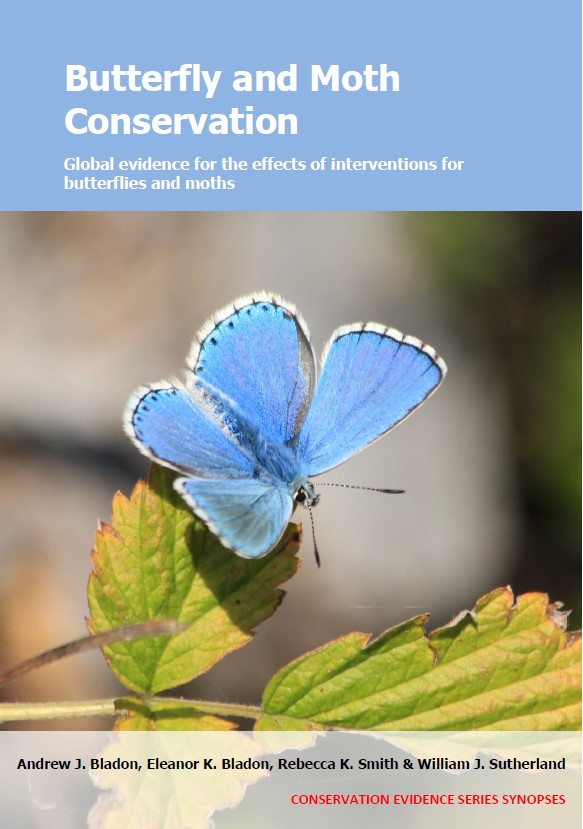Restore or create heathland/shrubland
-
Overall effectiveness category Evidence not assessed
-
Number of studies: 3
View assessment score
Hide assessment score
How is the evidence assessed?
-
Effectiveness
not assessed -
Certainty
not assessed -
Harms
not assessed
Study locations
Supporting evidence from individual studies
A replicated, paired, site comparison study in 2003 on eight moorlands in northern England and Scotland, UK (Littlewood et al. 2006) found that the moth community on restored moorland was more similar to that on established heather moorland than on degraded moorland. Compared to degraded moorland (0%) and established heather moorland (100%), restored moorland sites had moth communities that were 54–95% similar to established sites 6–13 years after restoration commenced. Sites restored by grazing exclusion were 63–95% similar to established sites 6–13 years after restoration, while sites restored by herbicide application and re-seeding were 54–75% similar to established sites 8–11 years after restoration (statistical significance not assessed). Restoration of eight moors commenced from 1990–1997. On four moors, restoration was conducted by grazing exclusion. At the other four moors, herbicide application and reseeding was used, sometimes with burning of dead vegetation and scarification of the ground. On each moor, 18 sample locations were established over 1–4 km: six each in restored sites (recreated dominance of heather Calluna vulgaris), degraded sites (acid grassland dominated by purple moor-grass Molinia caerulea or matgrass Nardus stricta), and established heather moorland. On 44 nights from June–September 2003, moths were caught in 2–3 Skinner light traps/night in different habitats, and identified to species at dawn.
Study and other actions testedA replicated, site comparison in 2002–2003 in eight restored heathlands in Groningen, Friesland and Drenthe, the Netherlands (Wallis De Vries and Enns, 2010) found that butterfly abundance and species richness was lower in heathlands restored by topsoil removal than in the surrounding landscape, but abundance was higher in an area where heather litter had also been spread than where it had not. There was lower abundance and species richness of both heathland specialist and generalist butterflies in the areas restored through topsoil removal (abundance: specialist = 4, generalist = 14; species richness: specialist = 3, generalist = 5) than in the surrounding 1 km2 (abundance: specialist = 5, generalist = 16; species richness: specialist = 13, generalist = 12). At a site with some heather litter spreading as well, there was higher abundance of specialist and generalist species where the heather had been spread (specialist = 39, generalist = 46). than where it had not (specialist = 5, generalist = 32). See paper for details of individual species. In 1990–1994, up to 50 cm of topsoil was removed from eight former agricultural sites to restore them to heathland. Heather cuttings were spread on the ground at part of one site. Five restoration sites had 12–40 ha of heathland in the surrounding 1 km2, and three were surrounded only by agricultural land. In April–September 2002–2003, butterflies were surveyed at each site along walking transects of >500 m, with one transect in each restored site and one in the corresponding surrounding 1 km2 habitat (heathland for five and agricultural land for three), resulting in 16 transects which were surveyed at least four times annually. At the site with heather spreading half the transect was within the spreading area and half outside it.
Study and other actions testedA study in 2007–2018 in a heathland in Suffolk, UK (Parker, 2018) reported that a population of silver-studded blue Plebejus argus translocated into a site with ongoing habitat management, survived for at least 11 years, increased in number and expanded its range. The highest single day count increased from 60 butterflies released in 2007 to 160 in 2013. Along a fixed transect, the annual butterfly ‘population index’ was 41 a year after release and 662 ten years later. Authors report that the area the butterflies were recorded in increased over time. In 2007, sixty butterflies were translocated to Blaxhall Common from two existing colonies in Suffolk. From 2007–2018, areas of bell heather Erica cinerea were forage harvested to create young patches, silver birch was controlled and areas of gorse Ulex spp. and other scrub were cleared. For 2007–2013 a daily peak count figure was provided from fixed point counts and for 2008–2018 a population index figure was calculated from recording butterflies along a fixed transect (number of counts and transects/year not given).
Study and other actions tested
Where has this evidence come from?
List of journals searched by synopsis
All the journals searched for all synopses
This Action forms part of the Action Synopsis:
Butterfly and Moth Conservation
Butterfly and Moth Conservation - Published 2023
Butterfly and Moth Synopsis





)_2023.JPG)














